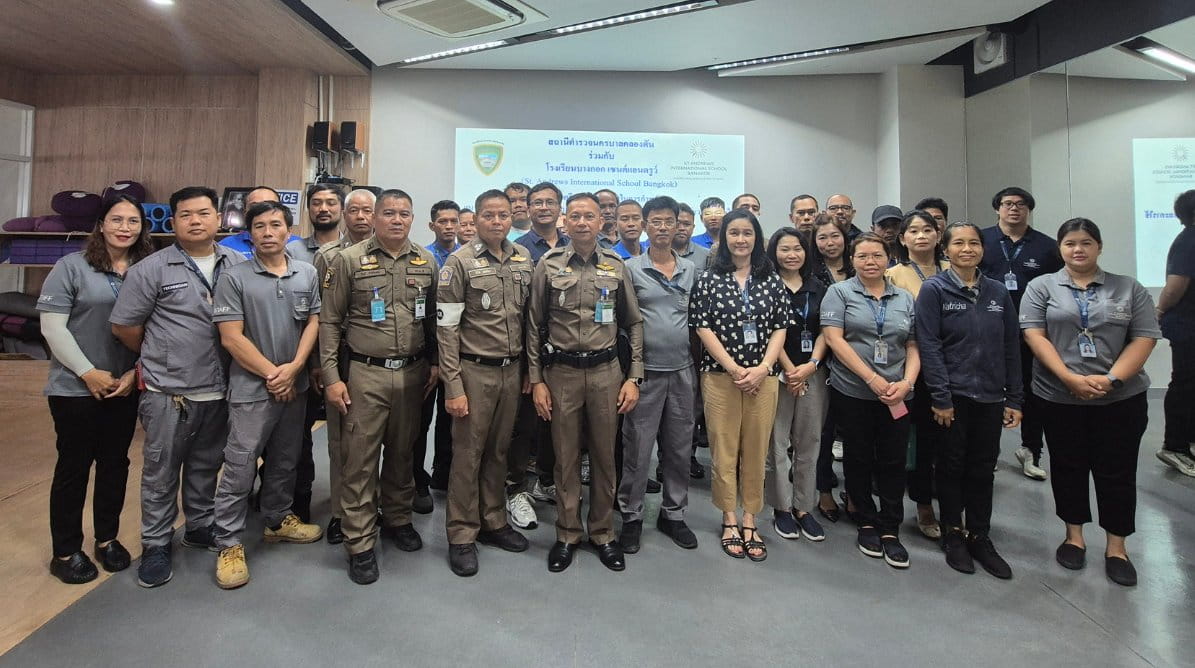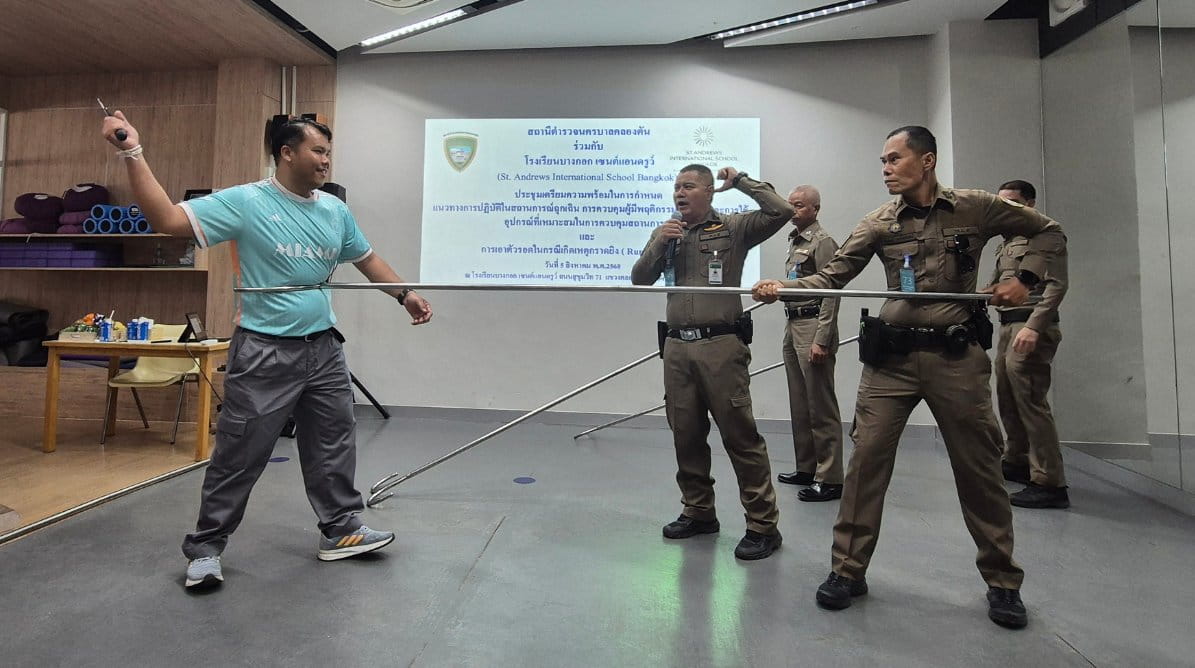In today’s complex educational environment, safeguarding goes beyond protecting students from abuse or neglect; it requires comprehensive safety preparedness. School staff must be equipped with the knowledge, confidence, and practical skills to respond swiftly to situations ranging from aggressive behaviour to serious emergencies. At St Andrews, safeguarding remains a top priority, which is why continuous, scenario-based training plays a key role in preparing staff with real-life strategies and skills.
Routine fire drills, safety exercises, and evacuation routines
To ensure staff and students remain prepared, termly fire drills take place across both the Primary School and High School. These drills familiarise the school community with evacuation routes, assembly points, and emergency procedures, reinforcing a calm and orderly response in the event of a real fire.
First aid and emergency response training
St Andrews invests in annual first aid training, with over 150 staff members currently certified as First Responders. This ensures trained personnel are always available across the campus to respond immediately to medical emergencies.
AED and Evacuation Chair training
Staff also receive specialist training in the use of Automated External Defibrillators (AEDs) and evacuation chairs, enabling them to assist individuals with mobility needs or cardiac events quickly and effectively.
Fire Safety and Drowning Incident Training
In addition to regular drills, all relevant staff undergo Fire Safety Training and Drowning Incident Training, which is especially important for those supervising swimming and water-based activities. As part of fire evacuation procedures, St Andrews implements Personal Emergency Evacuation Plans (PEEPs) for individuals requiring personal or intimate care, ensuring their safety is prioritised during emergencies.
Managing and restraining aggressive individuals
St Andrews also conducts training in partnership with officials from the local Khlong Tan Police Station, focusing on the safe management of individuals displaying aggressive or unpredictable behaviour.
Staff learn de-escalation techniques using calm language and body posture, alongside safe, legal restraint methods. They are also introduced to specialised equipment designed to diffuse threats without causing harm. This training equips staff to handle high-stress situations calmly and safely.
Emergency protocols and evacuation procedures
Staff are trained in emergency protocols and evacuation procedures, empowering them to make life-saving decisions quickly and effectively. They use hand signals for silent communication and receive traffic safety guidance to support the safe movement of students during emergencies.
Why continuous training matters
Safeguarding is never a one-time task. As threats evolve and safety standards change, schools must stay aligned with the latest protocols and best practices. This is why continuous safeguarding training is so essential.
- The benefits are clear:
- ● Improved situational awareness and quicker decision-making
- ● Greater staff confidence in dealing with emergencies
- ● Stronger collaboration with police and emergency responders
- ● A school-wide culture of safety and readiness that protects everyone on site
All safeguarding training and safety protocols at St Andrews are audited internally by Nord Anglia Education and the St Andrews Health and Safety Team, and externally by local authorities and various international organisations.










